Talk with our local travel specialist who can help organize your trip.
Buddhist Pilgrimage Sites in Nepal
Nepal, popular for the towering peaks, including Everest, is a melting pot of religions. Nepal is predominantly a Hindu nation, but every religion co-exists in harmony in Nepal. It is the land of mythology and legends. Gautam Buddha-the Lord Buddha-was born in Nepal.
Nepal is home to hundreds of temples, shrines, and centuries-old Buddhist monasteries. These Buddhist pilgrimage sites draw thousands of pilgrims and travelers alike from Asia and beyond. The sites reflect on ancient traditions, values and hold religious and historical significance. We have prepared this blog for those of us who are keen to explore the Buddhist pilgrimage sites in Nepal.
Table of Content
Lumbini
Lumbini-the birthplace of Siddhartha Gautam, Lord Buddha- is one of the Buddhist pilgrimage sites in Nepal. Queen Mahamayadevi gave birth to Siddhartha Gautam in the 7th Century BC, who achieved enlightenment and became the Buddha. This world-famous site is located in the Rupandehi district of Nepal. Arguably Lumbini is the world's most important Buddhist pilgrimage site, and hence we've placed it on the top of the list of Buddhist pilgrimage sites in Nepal. One of ten UNESCO world heritage sites in Nepal, Lumbini draws thousands of pilgrims and tourists worldwide every year.
Lumbini houses Mayadevi Temple, the main temple. You can visit various other temples, monuments, monasteries, a museum, and the Lumbini International Research Institute in the immediate vicinity of the site. There are ruins of ancient monasteries, a sacred Bodhi tree, an ancient bathing pond, and the Ashoka pillar. History has it that the great Indian Emperor Ashoka built the Ashoka pillar. Maya Devi Temple, World Peace Pagoda, Myanmar Golden Temple, Ashoka Pillar, and Lumbini Crane Sanctuary are the most-visit places in Lumbini.
Quick Facts
|
District |
Rupandehi |
|
Elevation |
150m (490 ft) |
|
Importance |
The Birthplace of Lord Buddha and a UNESCO world heritage site |
|
Distance from Kathmandu |
225km |
|
Other Attraction |
Mayadevi Temple, World Peace Pagoda etc. |
How to Get there
Lumbini is 225km away from Kathmandu. The easiest and cheapest way to travel to Lumbini from Kathmandu is by bus. It takes about 10 hours to reach Lumbini by bus. You can also fly to Gautam Buddha Airport in Bhairahawa from Kathmandu. The duration of the domestic flight from Kathmandu to Lumbini is 30 minutes. Yeti Airlines, Buddha Air, and Shree Airlines offer domestic flights to Lumbini. Once you arrive in Bhairawa, you can take a local taxi or local transportation to Lumbini. It is a 30-minute drive from Bhairahawa to Lumbini.
Tilaurakot
Tilaurakot, a historic site in Lumbini, is a place where Siddhartha Gautama-the founder of Buddhism-spent the first 29 years of his life. It is one of the 7 potential places listed by the Nepal Government that could be UNESCO World Heritage sites. A scientific excavation conducted in 1899 proved that the site was the capital of the Shakya Kingdom and confirmed the gate that Prince Siddhartha left for the journey of enlightenment. The Eastern Gate, The Fortification Wall, Central Pond, Samai Mai Temple, Central Structural Complex, and Western Gate are some of the discoveries that unveil the historical events associated with Siddhartha Gautama.
This site is located just 24 km from Lumbini. It is an important Buddhist pilgrimage site and also a pilgrimage site for Hindus, as it houses a Hindu sanctuary devoted to the god Samai Mai. The objects that have been excavated and restored are kept in Kapilvastu Museum near the Tilaurakot. You can visit the museum and gain insight into important historical events.
Quick Facts
|
District |
Kapilvastu |
|
Elevation |
150m |
|
Importance |
the historical site where Siddhartha Gautam spent the first 29 years of his life |
|
Distance from Kathmandu |
309km |
|
Nearest Attraction |
Lumbini |
How to get there
To get to Tilaurakot, you need to catch a flight or a local bus to Lumbini. The easiest and cheapest way to travel to Lumbini from Kathmandu is by bus. It takes about 10 hours to reach Lumbini by bus. You can also fly to Gautam Buddha Airport in Bhairahawa from Kathmandu. The duration of the domestic flight from Kathmandu to Lumbini is 30 minutes. From Lumbini, catch a local bus from Parsu Chowk and chance a bus to Tilaurakot.
Maya Devi Temple
Maya Devi Temple, an ancient Buddhist temple, is the main Temple in Lumbini, renowned for holding religious as well as historical significance. It is the site considered the birthplace of Gautama Buddha. History has it that Queen Maya Devi gave birth to Siddhartha Gautama in this temple. Overlooking the sacred pool, known as Puskarni, the Maya Devi Temple is one of the prominent landmarks in Nepal. In 1978, Japanese architect Kenzo Tange designed the temple. The 2013 research and excavation conducted by an international team of archaeologists discovered the ruins dating before 550 BCE.
Maya Devi temple houses Ashoka Pillar, the sacred bathing pond, and the Bodhi Tree, which are the important places to explore within the temple complex. History has it that Maya Devi took a bath in the pond before giving birth, and Gautam Buddha was given his first purification bath in the same pond. Buddhist pilgrims and travelers alike visit this place to behold its beauty and gain insight into historical events and pay obeisance to the site.
Quick Facts
|
District |
Rupandehi |
|
Elevation |
150m (490 ft) |
|
Importance |
an ancient Buddhist temple |
|
Distance from Kathmandu |
225km |
|
Nearest Attraction |
Lumbini, Tilaurakot |
How to Get there
To reach Maya Devi Temple, you need to head to Lumbini. The easiest and cheapest way to travel to Lumbini from Kathmandu is by bus. It takes about 10 hours to reach Lumbini by bus. You can also fly to Gautam Buddha Airport in Bhairahawa from Kathmandu. The duration of the domestic flight from Kathmandu to Lumbini is 30 minutes. Yeti Airlines, Buddha Air, and Shree Airlines offer domestic flights to Lumbini. Once you arrive in Bhairawa, you can take a local taxi or local transportation to Lumbini. It is a 30-minute drive from Bhairahawa to Lumbini.
Featured Trips
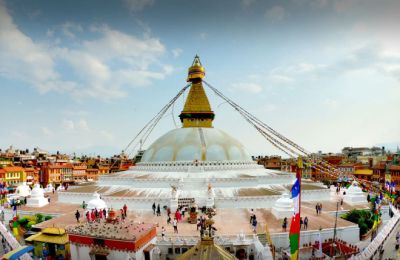
Kathmandu Heritage Tour - 1 day
Kathmandu Heritage Tour lets you explore the city’s iconic UNESCO World Heritage Sites. Walk through the medieval city and discover Kathmandu’s cultural gems.
Inquire Now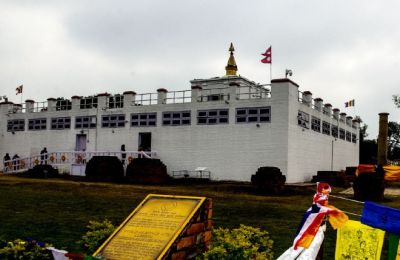
Nepal Buddhist Pilgrimage tour - 7 days
Nepal Buddhist Pilgrimage Tour explores the holy sites of Buddhist and Hindu significance in the Kathmandu valley and Lumbini. This can be one of the most enlightening experiences.
Inquire NowWhere to travel next?
Get help from our travel specialists for holiday ideas that matches your interests.
Ramagrama Stupa
Ramagrama Stupa, located in Parasi District of Nepal, is a Buddhist pilgrimage site that preserves the relics of the Gautama Buddha. Legend has it that the serpent king guarded the Ramagrama stupa, thereby stopping Ashoka from unearthing the relic. In the 3rd century BC, Ashoka opened 7 of 8 stupas and removed the Buddha relics to redistribute them into 84,000 stupas. This stupa is still intact and the only stupa containing the relics of Gautam Buddha. In this sense, the stupa holds historical as well as religious significance. This stupa was added to the World Heritage Tentative List by UNESCO in 1996 in the Cultural category.
To this day, if you visit the site, you'll see a grassy mound and a large tree sprouting from it. The extensive research conducted in 1964 affirmed that there is a stupa in the mound. The stupa is not supposed to be opened; to maintain its sanctity. The site is profoundly revered as the only stupa built with the bodily relics of the Buddha. For your information, the site is managed by Lumbini Trust Development.
Quick Facts
|
District |
Parasi |
|
Elevation |
41m above sea level |
|
Importance |
contains the relics of Lord Buddha |
|
Distance from Kathmandu |
243 km |
|
Nearest Attractions |
Lumbini |
How to Get there
The stupa is only 35km east of Lumbini. You can take a bus to Lumbini from Kathmandu; it is a 10-hour drive from Kathmandu. If you are pressed on time, you better catch a flight to Gautam Buddha Airport in Bhairahawa from Kathmandu. Once you arrive in Bhairahawa, you can take a local taxi or local transportation to Lumbini. It is a 30-minute drive from Bhairahawa to Lumbini.
Swayambhunath Stupa
Swayambhunath Stupa, a UNESCO world heritage site in Nepal, is the glory of Kathmandu city since the 5th century. Also known as the 'Monkey Temple,' Swayambhunath Stupa is nestled on top of the hill, overlooking Kathmandu valley. It is one of the holiest Buddhist sites in Nepal. Legend has it has Swayambhunath was light before it turned into a stupa and it self-evolved and hence the name. Swayamabhunath literally means self-existent or self-risen. The name is derived from two words: 'Swayam,' and 'bhu'; swayam means self, and Bhu means to take birth.
The stupa from the whitewashed dome to the gilded spire has meaning and is symbolic. The dome represents earth, the pair of eyes are Buddha's eyes, the nose-like structure means one (the Nepali number Ek), and the 13-tiered structure represents the 13 stages to nirvana. The base of the dome is embellished with prayers wheels, and the top of the stupa is adorned with prayer flags. Within its complex are several shrines and temples. Shantipur, Harati Devi Temple, Shree Karma Raj Mahavihar, and Pratapur are some of the major attractions of the stupa.
Quick Facts
|
District |
Kathmandu |
|
Elevation |
1,400m |
|
Importance |
one of the UNESCO world heritage sites in Nepal |
|
Distance from Tribhuvan International Airport |
9.5 km |
|
Nearest Attractions |
Kathmandu Durbar Square |
How to Get there
You can hire a taxi to the stupa, or take a local bus. Another way to get to the stupa is by foot. You can walk to the stupa from Thamel and reach there within a few minutes. The distance between Thamel and the stupa is 3 km only.
Boudhanath Stupa
Boudhanath stupa-located 8 km to the east of downtown Kathmandu-is one of the largest spherical stupas in the world and the largest stupa in Nepal. One of the UNESCO world heritage sites in Nepal, this stupa is a popular attraction in the bustling city of Kathmandu. It was built around the 14th century and is now a popular tourist site in Kathmandu, Nepal. Legend has it that it contains the remains of Kassapa Buddha, one of the ancient Buddhas.
The enormous whitewashed dome, Buddha's eyes, the thirteen steps, and the pinnacles are all symbolic with deep meaning. In addition, the base of the dome contains 108 small images of the Dhyani Buddha Amitabha and houses 3 layers of large platforms. The entire stupa is surrounded by walls adorned with rings of prayer wheels. The narrow alleys surrounding the stupa are lined with street vendors, colorful houses with rooftop restaurants, Tibetan art, and craft shops, Buddha statue shops, and Buddhist monasteries.
Quick Facts
|
District |
Kathmandu |
|
Importance |
one of the UNESCO world heritage sites in Nepal |
|
Distance from Tribhuvan International Airport |
12 km |
|
Nearest Attractions |
Pashupatinath Temple |
How to Get there
You can hire a taxi to the stupa, or take a local bus. You can also reach the stupa on foot. However, it is a bit far compared to Swayambhunath stupa- from Thamel. And we don't recommend walking to the Stupa from Thamel.
Namo Buddha Stupa
On the outskirts of Kathmandu lies Namo Buddha, a Buddhist pilgrimage site. Nama Buddha-perched on a picturesque hill, is a popular destination among local travelers for a day hike. The site is easily accessible and features a scenic hiking trail. It is one of the three important stupas of Kathmandu valley; the other two are Boudhanath stupa and Swayambhunath stupa. The stupa is attributed to the ancient story of a prince, who, in the act of compassion, sacrificed himself to the famished tigress. Unfortunately, the tigress consumed him and left bones and hair. According to Buddhist Legend, the stupa is built on the relics of the prince. There is a marble tablet in a small cave that depicts the interesting story of the prince and the tigress.
Namo Buddha allures hundreds of visitors every year, especially pilgrims from Tibet, India, and Nepal. The site is easily accessible and features a scenic hiking trail. Thrangu Tashi Yangtse Monastery and the cave of the tigress are two of the major attractions of the stupa. Walk up the hill, to the left of the stupa, and you'll spot a place that contains the stone depicting the Buddha giving his body to the tigress. There is a small stupa that houses the den of the tigress. The Thrangu Tashi Yangtse Monastery stands on the other side of the hill.
Quick Facts
|
Altitude |
1750m |
|
District |
Kavrepalanchowk |
|
Importance: |
one of the 3 main Buddhist stupas in Kathmandu valley. |
|
Distance from Kathmandu |
42 km |
|
Nearest Attractions |
Dhulikhel |
How to Get there
Namo Buddha stupa is just 42 km away from Kathmandu city. You can get there quickly by taxi or private car. It shouldn't take more than 2 hours by private car or taxi. You can also travel by public bus, but it usually takes a long time. If you want to indulge in adventure, you can hike to Namo Buddha from Bhaktapur or Dhulikhel.
Halesi-Maratika Caves
Halesi-Maratika Caves, also known as the Haleshi Mahadev temple, is a sacred place where Guru Padmasambhava and Dakini Mandarava attained immortal life, transcending death. It lies in the Khotang district of eastern Nepal, to the southwest of Mount Everest. It is a natural cave in between Dudhkoshi and Sunkoshi river, holding religious and historical significance. Haleshi cave is a pilgrimage site for Hindus, Buddhists, and Kiratas. For the Hindu pilgrims, the caves are called Halesi Mahadev Temple and is associated with Lord Shiva. For Buddhists, this cave equally holds religious importance, as it is believed that this cave is associated with the legend of Padmasambhava.
Halesi literally means astonishing, and Maratika means making an end to or destroying death in the Tibetan language. This site is believed to be one of the six supreme pilgrimage sites in the world for Tibetan Buddhists. Legend has it that the Amitabha Buddha taught eighteen Tantras of long life in this site. The caves are stunningly located 67 feet below the earth's surface. It houses two limestone caves, also called Dharma Cave. Every year hundreds of Hindu and Buddhist pilgrims visit this cave. During the holidays of Bhasmasur, Rama Navami, Shivaratri, Saga Dawa, and Ganesh Chaturthi, fairs and festivities are held in the cave.
Quick Facts
|
Altitude |
3010 ft |
|
District |
Khotang |
|
Importance |
the sacred cave of Guru Rinpoche and Mandarava |
|
Distance from Kathmandu |
222km |
How to Get there
To reach this sacred cave, pilgrims must embark on a journey to a beautiful village of Halesi in the Khotang district. You can travel by jeep for 8 hours to the village. There is also an option of a domestic flight from Kathmandu to Lamidanda. The flight takes 45 minutes approximately. The quickest yet most expensive way to head to the site is by hiring a private helicopter. And for low-budget travelers, the local bus is the best option.
Featured Trips
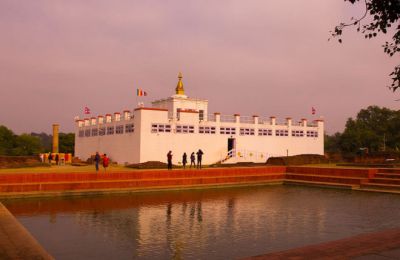
Kathmandu and Lumbini Sightseeing Tour - 6 days
In this Kathmandu and Lumbini sightseeing tour, you'll explore the cultural and religious highlights of the Kathmandu and Lumbini valleys within 6 days in Nepal
Inquire NowWhere to travel next?
Get help from our travel specialists for holiday ideas that matches your interests.
Shey Gompa
At last, we have Shey Gompa, one of the venerated Buddhist pilgrimage sites in Nepal. Shey Gompa at 4200m is located in the Dolpa district in Nepal. Shey Gompa translates to Crystal Monastery in the Tibetan language. This gompa was established in the 11th century and is considered a center for spiritual practice in the Dolpa region. Legend has it that the Kagyu tribe came to this place and practiced Shey Mela, celebrating their victory over evil spirits, the Rakshas. And since then, it is organized every twelve years.
One of the highlights of this gompa is its location. To explore this beautiful gompa, one needs to traverse hidden valleys through the dramatic landscape and beautiful trail in Dolpa. It involves trekking for days in the Dolpa region to visit this site. You will need to cross Kanga La at 5,151m, one of the highest passes in the Himalayan region. The gompa rewards stunning views of snow-white mountains and a beautiful landscape.
Recommended Trip: Upper Dolpo Trek - 27 Days
Quick Facts
|
Altitude |
4200m |
|
District |
Dolpa |
|
Importance |
one of the highest placed gompas in Nepal |
|
Distance from Kathmandu |
demands trekking for days |
|
Nearest Attractions |
Shey Phoksundo Lake and National Park |
How to Get there
By far, this gompa is the most distant gompa/site in all of the sites mentioned above. To get there, you will need to trek through rugged trails in the Dolpa region. Generally, most travel agencies offer itineraries to the gompa that involves at least 20 days of trekking. This is a real adventure to avid trekkers as it is in one of the least accessible corners of Nepal.
World Peace Stupa
World Peace Pagoda, also known as Shanti Stupa, is a Buddhist pilgrimage site perched on a hill overlooking Phewa Lake and Pokhara. It was built in a Buddhist pagoda-style by Morioka Sonin under the guidance of Nichidatsu Fujii. Legend has it that the Japanese monks built it to promote world peace after World War II. Shanti Stupa translates to Peace Pagoda. It is a popular attraction in Pokhara city and bestows stunning views of Phewa Lake, Pokhara, and Annapurna range. Arguably, it is the most popular viewpoint in Pokhara. It is the first World Peace Pagoda in Nepal and one of two peace pagodas in Nepal; the other one is Shanti Stupa in Nepal.
Shanti Stupa has long been a symbol of peace and serenity. It attracts hundreds of travelers who wish not just to enjoy the panoramic views but also to revel in the serene aura of the stupa atop a hill. People also hike up to the stupa to embrace a splendid view of sunrise and sunset. Tripadvisor, the world's largest travel site, has ranked this stupa as the second top attraction in Pokhara.
Quick Facts
|
Altitude |
1100m |
|
District |
Kaski |
|
Importance |
one of the two peace pagodas in Nepal and eighty peace pagodas in the world |
|
Nearest Attractions |
Phewa Lake and Pokhara City |
How to Get there
The most popular way to get to this stupa is by boat (at Phewa Lake) and hike. Hike a boat, head to the shore beneath the Pagoda, and hike up steep steps for about 4 minutes. There are great hiking trails and the blacked-topped road to the stupa. You can hire a taxi to the stupa or hop on a public bus. If you are in Kathmandu, you can catch a domestic flight to Pokhara from Kathmandu.
Asura Cave
The Asura Cave in Pharping is one of the most revered Buddhist pilgrimage sites in Nepal. It is the sacred site where Buddhist Guru Rinpoche meditated and attained peace and realization. The followers of Guru Padmasambhava embark on a journey to Asura cave to pay homage to the site. There is a handprint (believably) of Guru Rinpoche imprinted in the huge stone to the left of the entrance where people or say devotee press their hands into the very print of the hand, with a hope to connect to Guru Rinpoche. However, people believe that the hand doesn't belong to Guru Rinpoche. And a follower of Samten Gyatso claims that Tulku Urgyen Rinpoche's root teacher made the handprint.
Sacred to Guru Rinpoche, Asura Cave is also known as the Upper cave of Yangleshö. Inside the cave are the three main images of Guru Rinpoche, Yangdak Heruka and Vajrakilaya. Many older people visit this site to spend their last years to attain deeper insights and to relinquish worldly attachments. As the cave is blessed by the realization of Guru Rinpoche, hundreds of Buddhist pilgrims visit the Asura cave every year.
Quick Facts
|
Altitude |
2214m |
|
District |
Kathmandu |
|
Importance |
a site where Buddhist Guru Rinpoche meditated and attained peace |
|
Nearest Attractions |
Dhakshikali Temple, Neydo Tsahi Choling Monastery |
How to Get there
Asura cave is perched at a distance of about 16km southeast of Kathmandu. The easiest way to get there is by hiring a taxi; it takes about 2 hours to reach Pharping from Kathmandu. You can also take a local bus to Pharping from Ratna Park. The bus or taxi will drop off passengers at the football field, and from here, you need to walk through the paved road to the right that leads to the cave.
Mahaboudha Temple
Mahaboudha Temple, also known as the temple of a thousand Buddha, is a significant site located to the south of Patan Durbar Square. The name " the temple of a thousand Buddhas" came from the nine thousand bricks, each depicting a small image of Buddha. Also, the temple is sometimes called "the temple of 9000 Buddhas." Built by Abhaya Raj, dating back to 1585, the Mahaboudha temple is arguably the epitome of Nepali craftsmanship. This impressive temple got severely damaged by the earthquakes of 1934 and was renovated.
The temple is modeled on the Maha Bodhi Temple at Bodh Gaya, India. If you scratch the history of this temple, the history reveals that Abhaya Raj, a priest of Patan, was inspired by the famous Mahabodhi temple in Bodhgaya temple, and he began the construction of this temple. However, he died, and the construction was left half-done. Later, the temple was completed in 1610.
Quick Facts
|
Altitude |
1313m |
|
District |
Lalitpur |
|
Importance |
the temple of a thousand Buddhas |
|
Nearest Attractions |
Patan Durbar Square |
How to get there
You will need to head to the Patan Durbar Square in the Lalitpur district in Kathmandu valley to reach the temple. From Durbar Square, walk southeast to Sundhara Tole. Look for three brass water spouts and a tiny door to the temple. Note: You will need to pay an entrance fee of 50 rupees.
Conclusion
The above monasteries/gompas/sites are some of the Buddhist pilgrimage sites of Nepal, revered as the holiest places by Buddhist and Hindu pilgrims and every people in Nepal and foreign travelers. Interspersed around the corners of Nepal, these sites hold religious as well as historical significance. Some of the sites lie up in the mountain, while others are around the hillside of Kathmandu valley.
- Written by: Naba Raj Amgai
Updated: Jul, 27, 2021

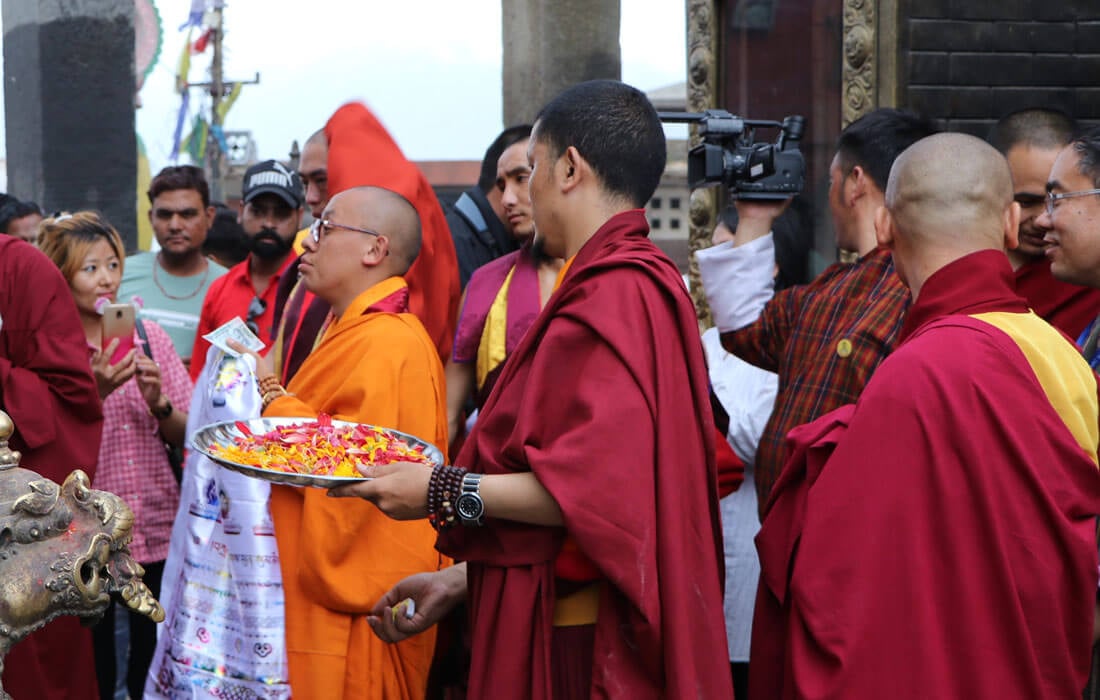













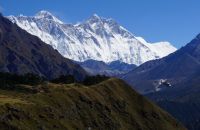
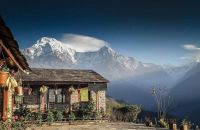
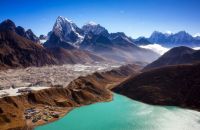
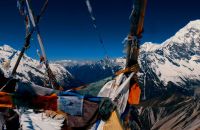
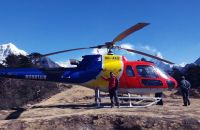
















Recent Comments